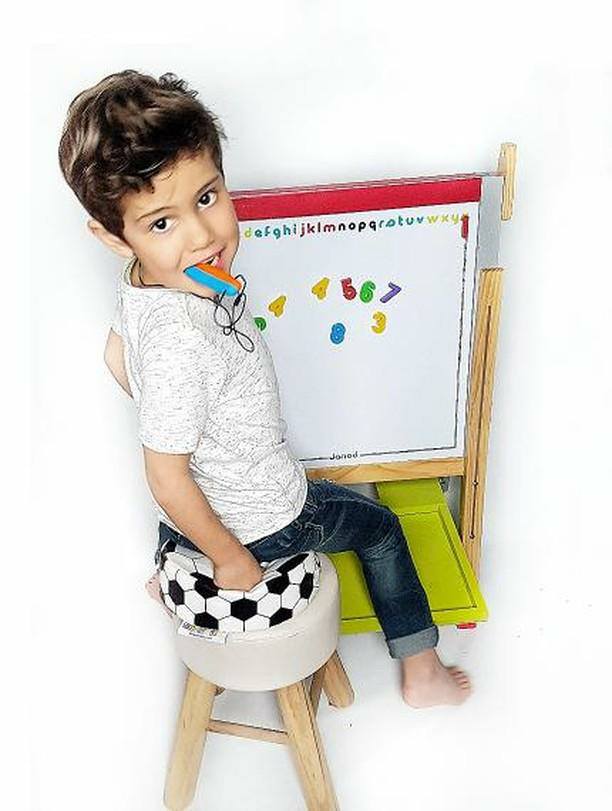
Why Kids Need Fidget Tools in School
Having worked in the school system I have seen many different opinions on the use of sensory tools for students. I’ve seen OT’s look at chewelry with disdain stating that kids don’t need it. I’ve heard classroom teachers ban all types of fidget “toys” for all students. Schools have mandated that students can use sensory tools only if provided by the school. This one makes sense as it recognizes that some students actually need sensory tools.
So what is a sensory tool anyway?
First, we need to differentiate between a tool and a toy. For a sensory tool to be effective, there must be boundaries set. If there are no boundaries as to when and how to use it, the tool quickly becomes a toy and its effectiveness is lost.
Sensory tools are used and even much needed for kids with Sensory Processing Disorder.
Sensory Processing Disorder is when an individual’s senses are either under stimulated or over stimulated. The challenge is when a person is unable to self-regulate their senses. This is where sensory tools come in.
The proprioceptive system can cause a person to be either under stimulated or over stimulated. The same tools can be used for either. Many activities or tools can be used right in the classroom. Chairs that rock or stools that wobble are excellent for alerting the body and for calming it down.
Weighted vests and weighted animals can provide proprioceptive input that can calm the sensory system.
Fidget tools such as a stress ball, stretchy putty, an infinity cube, small porcupine balls and spinning pencil toppers are all discrete and simple tools that a student can use right at their desk to help alert or calm their sensory system.
Chewelry – chewable bracelets and necklaces can also be very calming to those that have active sensory systems and high anxiety. There may be students that chew on their shirt collars or on their sleeves. They may also chew and ingest unsafe items such as pencils, pens, plastic from water bottles or rulers. Some kids may harm themselves when very dysregulated by biting their arms or hands. Chewelry can be used to redirect harmful habits to the safer chewelry item.
Because chewelry is typically made from silicone, it is antimicrobial and can be cleaned easily with soap and water. Chewigem uses only the highest-grade silicone in our chewelry, assuring that it is extremely safe. Another safety feature that is important is the breakaway clasp – it will come apart if subjected to pressure.
Sensory tools should always be available to kids for when they need them. Teachers will recognize when their student is over or underregulated and can direct them to a tool that works for them. As students get more aware of their needs, they’ll be able to know when their body needs the chewelry or the weighted animal.
If your school doesn’t allow sensory tools, you may need to talk to the administration. Chewelry and sensory tools have their place in the classroom as they help students focus and learn.
© Copyright Deyon Ventures Inc. 2025
Chewigem Canada is located on Treaty 1 Territory, the traditional lands of the Anishinaabeg, Cree, Oji-Cree, Dakota, Dene Peoples and the homeland of the Métis Nation. Chewigem respects the Treaties that were made on this territory and is dedicated to working with all in the spirit of reconciliation for as long as the sun shines, the grass grows, and the river flows.
Chewigem Canada est située sur les terres traditionnelles du Traité no. 1 des peuples Anishinaabe, Cri, Oji-Cree, Dakota et Dene, et sur la patrie de la Nation métisse. Nous reconnaissons les traités et les relations qui font notre communauté et nous nous engageons à travailler ensemble dans un esprit de réconciliation aussi longtemps que le soleil brille, que l’herbe pousse et que la rivière coule.